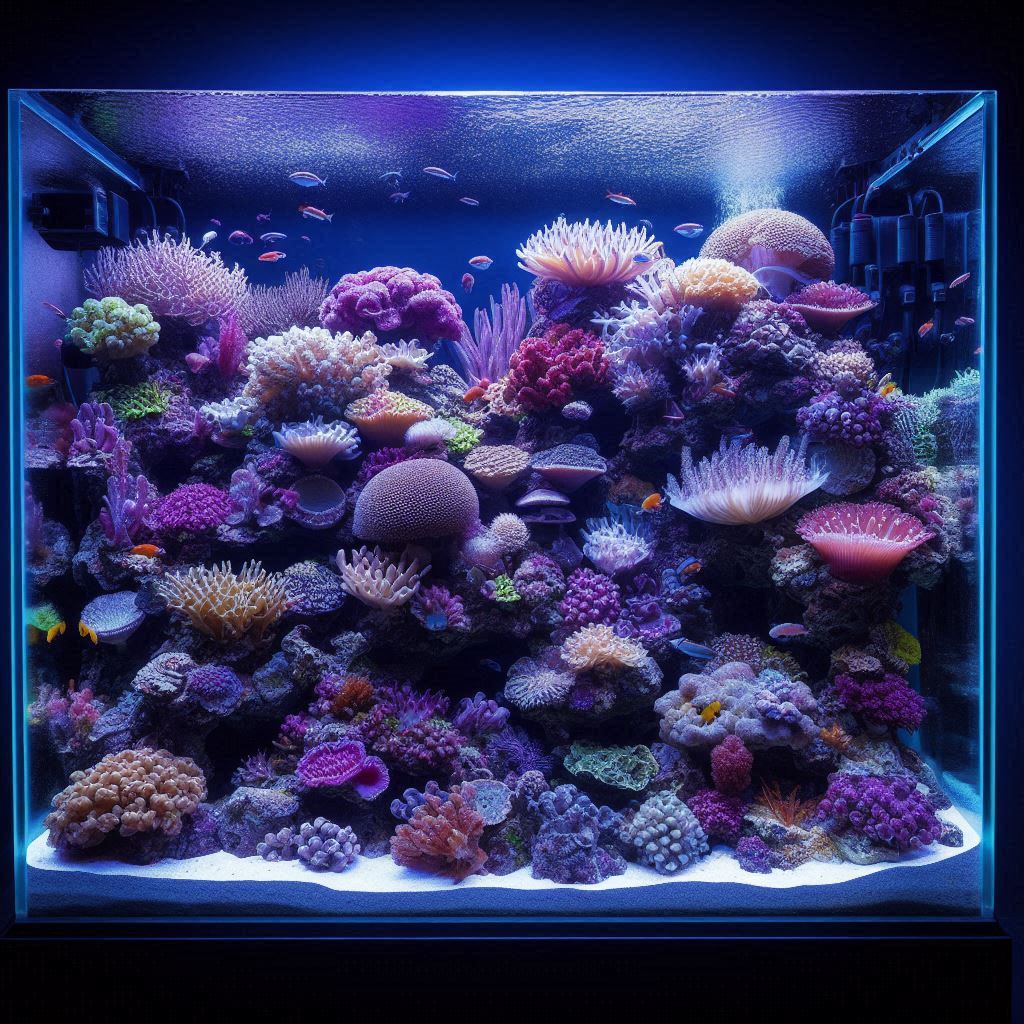
The Essential Reef Tank Setup Checklist
1. Select Your Tank:
- 15g or 22g Tank Kit: Choose the tank size that best fits your space and goals.
2. Find the Perfect Spot:
- Ensure the location is stable, out of direct sunlight, and near power outlets.
3. Install the Stand:
- 15g Stand or 22g Stand: Assemble and place your stand in the chosen spot. Make sure it's level.
4. Set Up the AIO Tank:
- Clean the tank with water (no soap or chemicals).
- Place the tank on the stand.
- Ensure the built-in filtration compartment is clean and properly installed.
5. Add Substrate and Decor:
- Add a layer of live sand or aragonite substrate.
- Position live rocks or aquascaping structures to create hiding spots and visual interest.
6. Install Filtration and Equipment:
- Built-in Filtration System: Ensure the built-in filtration system in the back compartment is properly set up. Which includes adding your choice of mechanical and/or biological media.
- Protein Skimmer: Install the protein skimmer in the designated compartment to remove organic waste.
- Heater: Place the heater in the back compartment and set it to maintain a stable temperature of 76-80°F (24-27°C).
- LED Light: Install the LED light, ensuring it's suitable for reef tanks with corals and provides the necessary spectrum.
- DC Return Pump: Connect the DC return pump to ensure proper water circulation from the filtration compartment back to the main tank.
- Wavemaker: Position the wavemaker in the main tank to create natural water movement, benefiting the corals and fish.
7. Set Up the Mesh Lid Kit:
- Mesh Lid Kit: Assemble and place the mesh lid on top of the tank to prevent fish from jumping out while allowing for gas exchange.
8. Add Water:
- Fill the tank with RO/DI water.
- Mix in marine salt according to the manufacturer’s instructions.
- Use a refractometer or hydrometer to check the salinity (aim for 1.024-1.026 specific gravity).
9. Connect the Outlet Bar:
- Outlet Bar: Plug all your equipment into the outlet bar, ensuring you have enough sockets for each device and that everything is safely connected.
10. Cycle the Tank:
- Introduce a bacteria colony to speed up or instantly cycle the aquarium.
Or
- Introduce a source of ammonia to start the nitrogen cycle (e.g., pure ammonia, fish food, or a piece of shrimp).
- Monitor ammonia, nitrite, and nitrate levels using test kits.
- Wait for the tank to fully cycle (ammonia and nitrite levels should be zero).
11. Add Live Stock:
- Begin with hardy corals and fish. Allow them to acclimate using a drip acclimation method.
- Gradually introduce more diverse and delicate species as the tank stabilizes.
12. Regular Maintenance:
- Perform weekly water changes (10-20% of the tank volume).
- Test water parameters regularly.
- Clean the tank and equipment as needed.
- Feed the inhabitants appropriately and monitor their health.
13. Enjoy Your Reef:
- Take time to observe and appreciate the beauty of your reef tank.
- Share your journey and progress with the reef-keeping community!
